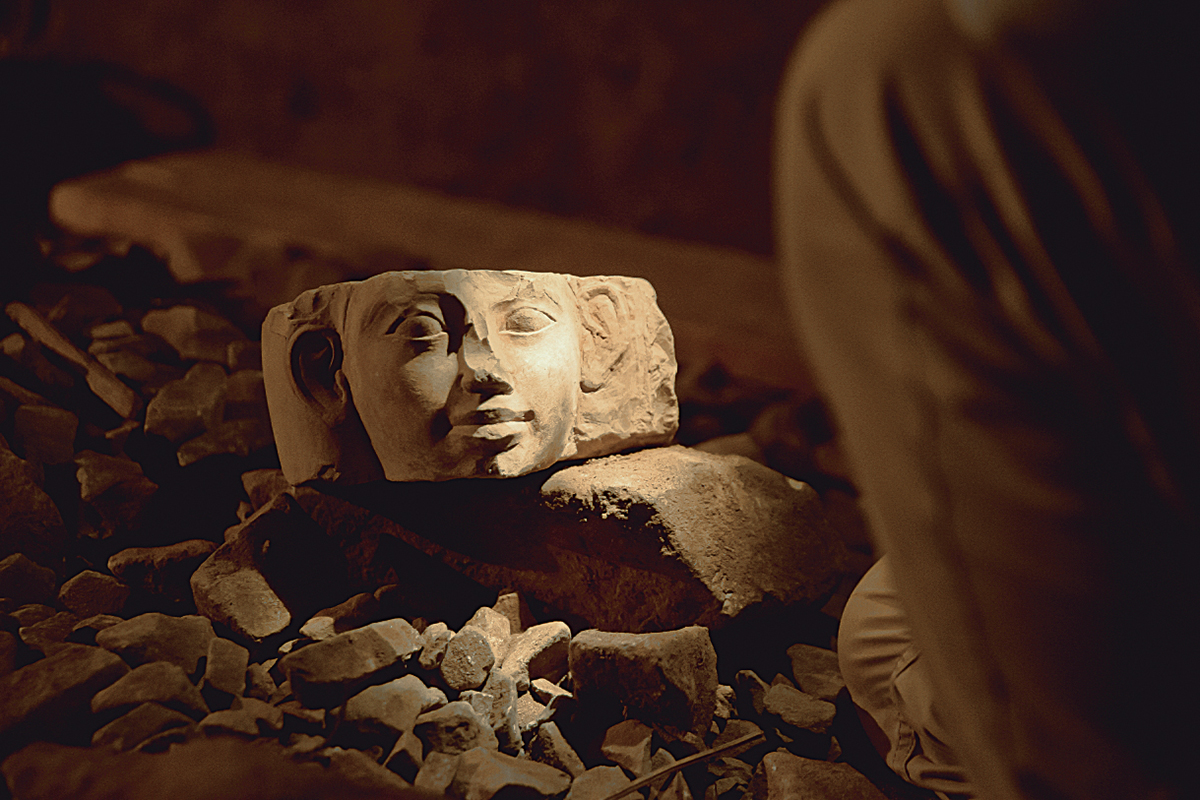Promuseum patron for the Kheops Fund for Archaeology: 2023

For several years now Promuseum has been a sponsor of the Cheops Fund for Archaeology and more specifically for the French Mission of the Theban Tomb 33.
In collaboration with our partner Nicolas Buis from Mafabrique, we have recommended and installed a humidity control system using porous polymers in many of our heritage display cases.
This treatment has been tested and validated by the C2RMF for its high performance and its great viability for the treatment of relative humidity.
The objective of the French mission at the Theban Tomb 33 is to study the epigraphy of the tomb (inventory of texts, copying, translation, preparation for publication), the cleaning of the walls and the photographic survey of the site.
Find more details about the Theban Tomb 33 in our previous article.
Thus, for the last 3 years, the team of archaeologists has been excavating the first hypostyle hall. The completion of the excavations down to the rocky floor of the hall has allowed us to recover its original volume and proportions and to uncover the remains of the four pillars as well as other architectural details that were no longer visible.
In 2021, a major conservation-restoration project was carried out on the many wall fragments found on the ground during the archaeological excavation of Room I.
The fragments were sorted and then cleaned outside the tomb by a team of Egyptian restorers supervised by Younes Ahmed, a restorer at the IFAO.
The intervention program initially envisaged for this mission could not be undertaken due to the non-obtaining of the approval of the permanent committee. As a result, no conservation and restoration campaign could begin this year inside the tomb. The mission was therefore limited to the continuation of cleaning tests, which are always useful, and to the necessary presentation to the Egyptian officials of the particular difficulties and the stakes involved in the conservation of this monument, which is the result of the research and investigations carried out until now.
Recording temperatures with a Mafabrique sensor

Several climatic sensors (temperature and relative humidity) have been installed in the tomb since 2017 to record the climate of the tomb and its variations over the long term, providing information on its interactions with its environment and the changes in it.
This allows for outdoor climate data to be available for comparison with the sensors installed inside the tomb, to verify the outdoor and indoor influences. It turns out that the temperature remains stable in the tomb compared to the seasonal variation.
It can also be noticed that the further the rooms are from the tomb entrance, the less the temperature varies. Over the recorded period (from 18/11/20219 to 27/09/2021), the temperature variations are between 0.3°C in the vault, 1.5°C in room XIX and 2.1°C in room X. The temperature of the rooms remains very stable on average at 28.8°C, identical in this to the results observed during the 2017-2019 recording campaign.
Recording of relative humidity with a Mafabrique sensor
As the temperature variations in the tomb are very small, the relative humidity variations depend on the water weight of the air. The seasonal influence on the indoor/outdoor water weight appears to be very important. The previous study generated the hypothesis of a moisture source in the tomb.
The 2019-2021 climate record shows that the vault now responds, like other rooms in the tomb, to outdoor conditions, while maintaining a higher Relative Humidity and water weight than other rooms. The RH of the vault is on average 45%, compared to 34% for the other rooms.
The origin of this continuous water source has not been identified.
The new analyses suggest a drying of the vault and a cessation of the moisture source. The 2017-2019 analyses observed an average of 18.1g of water per Kg of dry air, while the 2019-2021 studies indicate 11.2g of water per kilo of dry air.
The drop in humidity in the vault may have repercussions on the rate of air pollution observed, as well as on the appearance of salts on the surface of the stone. These two phenomena should be monitored particularly in the tomb.

Source and photographic credits: Kheops Fund for Archaeology


